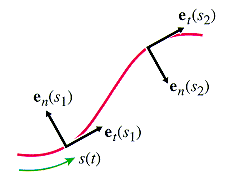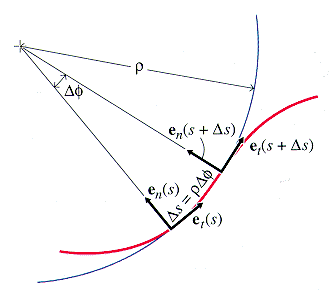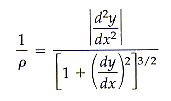
Normal/Tangential Coordinates
Sometimes it is useful to describe motion by giving the path that a particle is moving along and the speed of the particle at each point along the path.

This coordinate system is convenient to use when particles move along a surface of known shape.
 |  |
Coordinates are chosen at each point along the part such that:
- et is a unit vector tangential to the path and pointing in the direction of motion, and
- en is a unit vector normal to the path and pointing toward the center of curvature.

where s is the position along the path.
Velocity of the particle has direction et (it is always tangent to the path) and a magnitude equal to the rate at which the particle moves along the path, such that

where v = ds/dt.
Acceleration of a particle in normal and tangential coordinates is given by

where
is the radius of curvature (the radius of the circle that best fits the path at the point of interest).


Recall from calculus that the definition for radius of curvature is given by

Notice that velocity only has a component tangent to the particle's path, while acceleration has components both tangent and normal to the path.